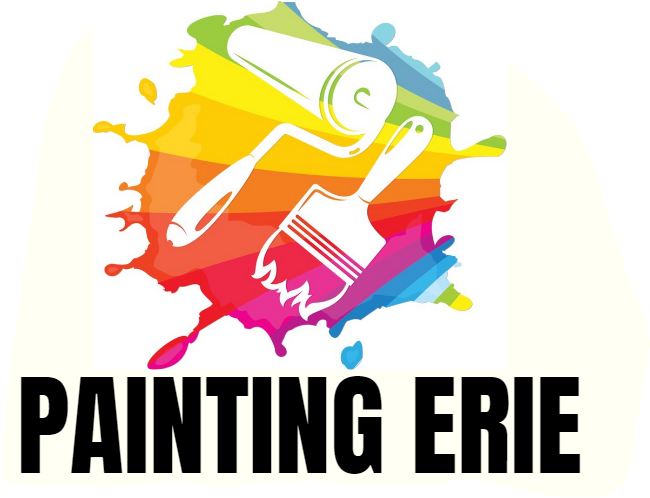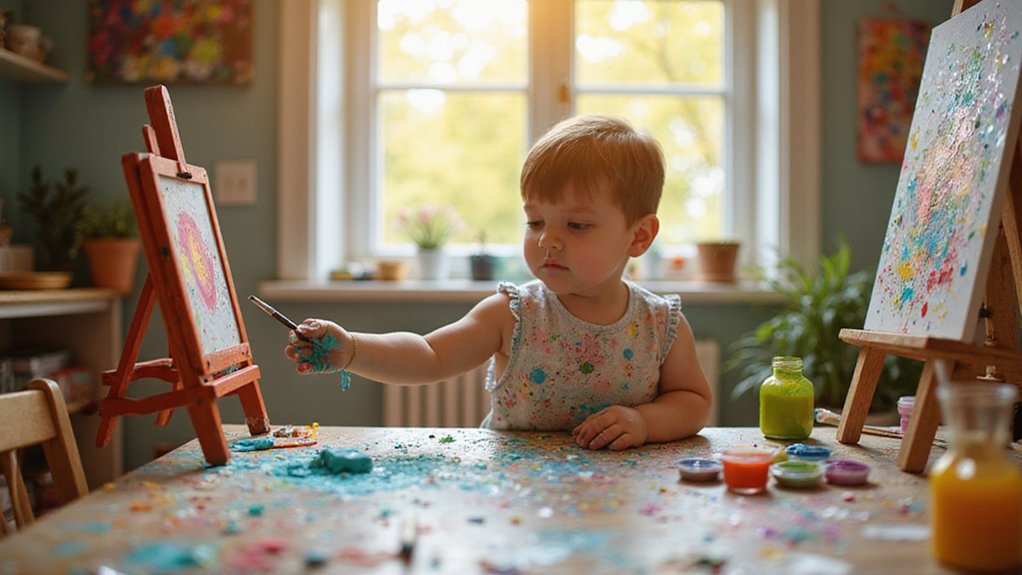As you envision the perfect playroom or bedroom for your little ones, don’t underestimate the power of paint. The right hue can transport them to a world of wonder, or create a serene oasis for downtime. Will you opt for soothing pastels to calm their minds, or vibrant brights to spark their imagination? Perhaps a playful accent wall or nature-inspired tones will set the tone for an expedition. Whatever your vision, the possibilities are endless – and we’re about to investigate them together.
Soothing Pastels for a Calming Atmosphere
Pick a soft, serene palette to create a calming oasis in your child’s space, and watch them unwind in a soothing atmosphere that fosters relaxation and focus. Soothing pastels are perfect for creating a peaceful ambiance, allowing your little ones to feel calm and centered.
Soft tones like pale blue, mauve, and mint green can help reduce anxiety and promote better sleep. Muted shades of peach, lavender, and powder pink can add warmth and coziness to the space without overwhelming the senses. These gentle hues can also help create a sense of balance and harmony, making it easier for your child to concentrate on their studies or engage in creative play. For added safety, especially in spaces for young children, consider using non-toxic paints to ensure a healthy environment.
Bold Brights to Spark Imagination
As you venture into the domain of bold brights, you’ll gain access to a world of limitless possibilities, where creativity knows no bounds and imagination runs wild. This palette is perfect for kids who thrive in environments that stimulate their senses and inspire their creativity.
Bold brights can add energy and excitement to a room, making it the perfect backdrop for artistic expression and imaginative play.
To create a space that sparks imagination, consider incorporating the following elements:
- Vibrant textures: Add depth and visual interest to your walls with textured paints that mimic the look and feel of fabric, paper, or other materials.
- Luminous metallics: Incorporate metallic paints that shimmer and shine, adding an extra layer of excitement and sophistication to the space.
- Color blocking: Divide the walls into sections and paint each one a different bold, bright color to create a lively and engaging atmosphere.
- Protective coatings: Consider using waterproof paints like those offered by deck painting services to safeguard surfaces from spills and stains in active play areas.
Whimsical Accent Walls for Added Fun
Three fanciful accent walls can amplify a kids’ space from typical to extraordinary, infusing a measure of lightheartedness and individuality into the room. You can create a playful accent wall by painting a creative mural that sparks your child’s imagination. For instance, a hot air balloon soaring into the clouds or a friendly dragon guarding a treasure chest can become a focal point in the room.
Alternatively, you can add a touch of playfulness with stencil patterns, such as polka dots, chevrons, or geometric shapes, in bold, bright colors. These designs can add visual interest to the space and create a sense of fun. By incorporating a playful accent wall, you can create a space that’s both functional and enjoyable for your child.
Nature-Inspired Hues for a Sense of Adventure
Your child’s space can also be infused with a sense of journey by incorporating nature-inspired hues into the paint palette. These earthy neutrals and lush greenery tones will transport your little explorer to a world of expedition and discovery.
Consider the following hues to bring the outdoors in:
- Sagebrush: A soft, muted green that evokes the rolling hills of the countryside.
- River Rock: A weathered, earthy tone that echoes the rugged beauty of the natural world.
- Moss Glen: A dynamic, emerald green that recalls the mystery and magic of a hidden forest glade.
Monochromatic Magic for a Coordinated Look
One clever way to create a cohesive look in your child’s space is by embracing monochromatic magic. By choosing a single hue and using it in varying shades, you’ll achieve a sense of harmony and visual flow. To add depth and interest, incorporate minimal tones that subtly contrast with the main color. Accent textures, like velvet or linen, can also modify the space without disturbing the monochromatic scheme.
This approach allows you to create a soothing atmosphere that promotes relaxation and focus. Plus, it’s easy to mix and match furniture and decor pieces when they’re all tied together by a single color thread. The result is a calming, cohesive space that reflects your child’s personality and makes them feel happy and at ease.
Color-Blocking for a Playful Twist
As you step away from monochromatic harmony, color-blocking bursts onto the scene, injecting a playful twist into your child’s space. This vibrant technique involves dividing the wall into sections and painting each one a different color, creating a visually appealing contrast.
To add an extra layer of fun, try incorporating asymmetric patterns and geometric designs into your color-blocking scheme.
- Geometric Bliss: Pair bold, bright colors with geometric shapes like triangles, circles, or hexagons to create a playful, modern look.
- Asymmetric Accent: Use color-blocking to create an accent wall with an asymmetrical pattern, adding visual interest to the room.
- Rainbow Riot: Divide the wall into sections and paint each one a different color of the rainbow, creating a fun, lively atmosphere that’s perfect for a kid’s space.
Ombre Effects for a Gradual Pop of Color
How can you add a touch of whimsy to your kid’s space without overwhelming the senses? One way is to incorporate ombre effects, a subtle yet impactful way to introduce color. This technique involves gradating hues from light to dark, creating dreamy gradients that add depth and visual interest.
You can use lively ombre to create a focal wall, or apply it to a single accent wall to add a pop of color. The beauty of ombre lies in its versatility – you can choose soft pastels for a calming atmosphere or bold brights for an energetic vibe. To achieve the look, simply start with a light base coat and gradually build up to a deeper shade, blending the colors seamlessly. The result is a unique, Instagram-worthy space that your kid will love.
Frequently Asked Questions
Can I Use Paint With Glitter for a Sparkly Effect?
You’re looking to add some serious sparkle to your space, and using paint with glitter sounds like a fabulous idea! Opt for shimmer paint options or glittery paint finishes to create a mesmerizing effect that’ll make your walls truly shine.
How Do I Choose a Paint Color My Kid Will Love?
To choose a paint color your kid will adore, you’ll want to ponder their favorite hues and incorporate their interests into the decision. Think about the colors they’re attracted to in toys, clothes, and artwork – and let those inspire your palette!
What Type of Paint Is Best for a Textured Wall?
When tackling a textured wall, you’ll want to opt for a paint that’s up to the task. Look for a low-sheen latex paint with an eggshell finish, which will hide imperfections while providing a soft, subtle sheen that’s easy on the eyes.
Can I Paint a Mural Directly on the Wall?
You can definitely paint a mural directly on the wall, using a stencil mural application to guarantee precision and crisp lines. Choose from various paint finish options to achieve the desired look, from matte to glossy, and let your creativity shine!
How Long Does It Take for Paint to Fully Dry?
You’ll be keen to know that the drying time for paint varies, depending on factors like humidity, temperature, and thickness of application – typically taking anywhere from 1-24 hours to fully dry, so plan accordingly for your next project!

